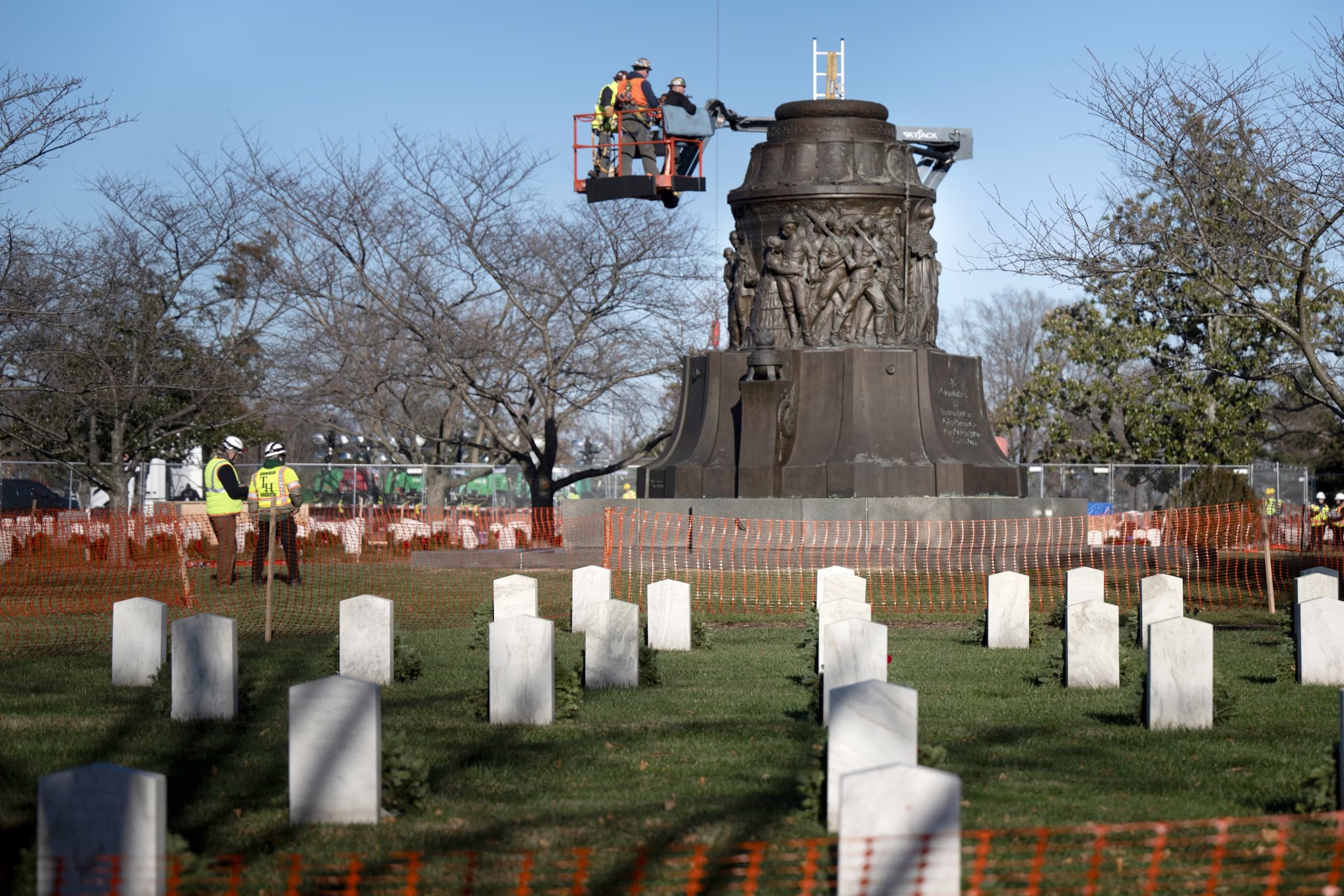Loading News Article...
We're loading the full news article for you. This includes the article content, images, author information, and related articles.
We're loading the full news article for you. This includes the article content, images, author information, and related articles.
The transformation of controversial US Confederate monuments into art pieces reignites global discussions on how nations confront divisive histories, drawing parallels to Kenya's own complex journey with colonial-era symbols and national identity.

Massive monuments of Confederate generals, once flashpoints for protests in the United States, have been melted down and re-emerge as art installations in a Los Angeles museum. Among them is a significant monument of General Robert E. Lee, whose presence previously ignited civil unrest in Charlottesville, Virginia. The melted bronze now forms part of an exhibition titled 'Monuments,' which opened on Thursday, October 23, 2025, at The Brick and the Geffen Contemporary at the Museum of Contemporary Art.
The exhibition features 18 decommissioned Confederate monuments alongside contemporary art, including a graffitied equestrian statue of Lee and Thomas 'Stonewall' Jackson, two prominent figures in the US Civil War. Curator Hamza Walker, who dedicated eight years to acquiring these monuments, emphasised their historical context: "They fought for slavery... The idea of lionising those figures. What did they believe? They believed in white supremacy. Period."
This artistic reinterpretation of contentious historical symbols resonates deeply in Kenya, a nation that underwent its own significant decolonisation of public spaces following independence in 1963. At that time, statues of British monarchs and colonial settlers were swiftly removed and often hidden away. Streets bearing colonial names were renamed, and historical narratives in textbooks were revised to minimise references to the colonial period.
Kenya's monumental landscape now predominantly features figures central to its independence struggle and national identity. Notable examples in Nairobi include the Jomo Kenyatta Mausoleum, honouring Kenya's first President, and the Dedan Kimathi Statue, commemorating the Mau Mau leader who fought against British rule. These monuments serve as educational and memorial symbols, reflecting themes of independence, cultural identity, and contemporary political achievements.
The National Museums of Kenya is entrusted with the authenticity and upkeep of Kenya's historic monuments, undertaking periodic restorations to maintain their cultural and architectural value. The process of memorialisation in Kenya has, however, been deeply intertwined with political motives, with political elites often shaping the narrative of national heroes. For instance, the Mau Mau remained a proscribed organisation until 2003, and Dedan Kimathi's statue was only unveiled in Nairobi in 2007, 50 years after his execution by the British.
The removal of colonial monuments in Kenya was a deliberate act to promote nationalism and diminish imperial influence. However, some critics argue that the subsequent silence or the replacement of these statues with those of political elites, rather than a more inclusive historical representation, has left gaps in the nation's historical narrative. This highlights ongoing discussions among historians, artists, and the public about how best to represent a complete and honest history.
The debate surrounding historical monuments underscores the ongoing challenge of confronting difficult pasts. While the removal of symbols of oppression is a step towards decolonisation, the subsequent narrative and what replaces these symbols are crucial. In Kenya, the failure to fully elaborate an honest history of the colonial period risks perpetuating a state structure that, in some ways, mirrors its colonial predecessor.
A key unanswered question in both the US and Kenyan contexts is whether the removal of statues is accompanied by a fundamental uprooting of the attitudes, laws, and norms that underpinned the historical injustices they represented. In Kenya, there is a continuous discussion about whether the current monumental landscape adequately represents the diverse narratives of the nation's struggle for independence and its post-colonial identity.
The 'Monuments' exhibition in Los Angeles offers a contemporary approach to dealing with controversial historical symbols through art. In Kenya, the ongoing efforts by the National Museums of Kenya to preserve and interpret national monuments, alongside public discourse, will continue to shape how the nation remembers and learns from its past.
Observers will be keen to see how the 'Monuments' exhibition influences public perception and policy regarding historical symbols in the US. In Kenya, the ongoing evolution of national identity and historical memory will likely continue to be reflected in public art and commemorative spaces, with potential for new interpretations and additions that reflect a more inclusive historical understanding.
The discussion around historical monuments is part of a broader global movement to decolonise public spaces and narratives. Similar movements have been observed in other African nations, where colonial-era statues have been removed or recontextualised. Kenyan artists are also increasingly using their work to engage with social and environmental issues, sometimes repurposing discarded materials to create new narratives.
Keep the conversation in one place—threads here stay linked to the story and in the forums.
Other hot threads
E-sports and Gaming Community in Kenya
Active 6 months ago
Popular Recreational Activities Across Counties
Active 6 months ago
The Role of Technology in Modern Agriculture (AgriTech)
Active 6 months ago
Investing in Youth Sports Development Programs
Active 6 months ago